The Control Box
The control box is made of polished pinewood with a 5mm steel plate base attached with wood screws (600mm long x 125mm tall x 160mm wide). I could have painted it black but that would have just added to the existing collection of fashionably ugly black or beige computer peripherals.
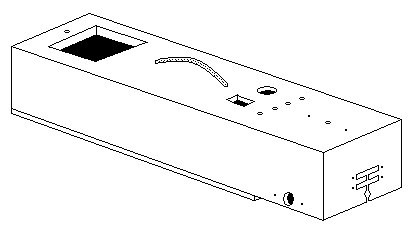
Rudder Pedals
The rudder pedals are sturdily constructed to tolerate moderate forces. It incorporates a central pivot link with guides for each pedalís control arm. The arc movement of the rudder pedals can be adjusted by disassembling then raising or lowering the pivot guide with washers. Due to the small rotation created by the movement of each pedal, the sensor is coupled directly to the rotating axis of each pedal with the potentiometerís case linked by control arm to one pedal and the potentiometerís yoke linked by control arm of the other pedal. This technique improves responsiveness by bypassing any inherent mechanical slack within the pivoting system. Not illustrated here are the required bracing for the pivot point, the pedal rotating points, and the springs that bring the rudders back to neutral.
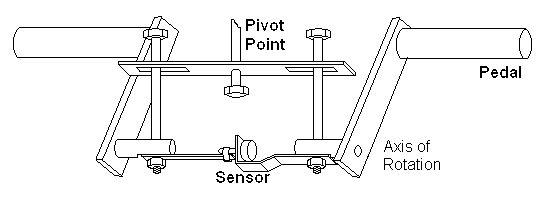
Yoke
A straight yoke would have been really ordinary and an injustice to the handgrip I was going to fit so I drew up some sample curved yokes before I settled on the design I wanted. This little investigation helped me determine the ergonomic properties that I could design into this yoke - e.g. the plane of movement at the top of the yoke is not lateral but tilted forward a little - which is the natural movement of the elbow in this position.
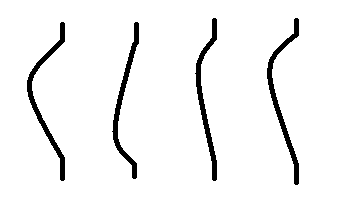
The yoke design I settled for is made of 35mm diameter steel pipe. It was professionally made to specification for me by a friend after trying unsuccessfully to bend aluminium pipe into this shape. The properties of aluminium change dramatically under heat - it becomes brittle and emits toxic fumes, whereas the steel pipe used here was heated until it was glowing orange then inserted into a jig and bent into shape.
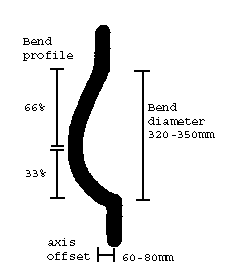
The yoke is attached to a compressed spring used as the pivoting point. The spring is compressed by tightening an eyebolt that connects to the other end of the spring with a chain. One end of the spring system is fitted to the steel plate base and the top end has the yoke clamped to it. Originally the spring (from an engine valve) was intended to hold the yoke upright, however the combined weight of the grip and the yoke proved too much so the yoke rests forward. The spring system bypasses any inherent mechanic slack found in push/slide systems and provides a comfortable action.
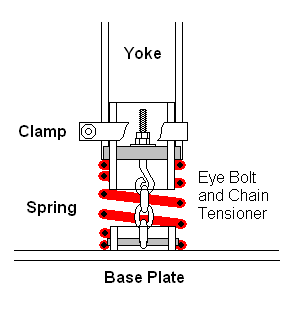
The spring system pivots in the centre of the spring (not at the base) and the yoke sensors are positioned at this point. A sensor exists for each X and Y axis which are linked with flexible plastic connecting arms further up the yoke.
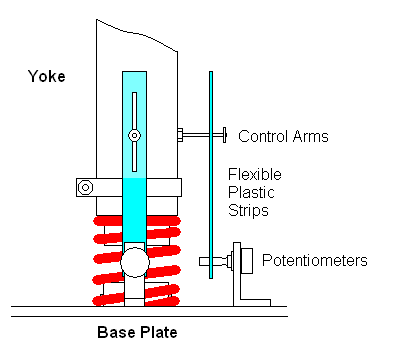
The Control Box Interfaces (DB25, DB25, DB15)
The main circuit board lives in the control box and has three external interfaces. A DB25 female socket that connects to the
throttle box interface, a DB25 female socket that connects to the keyboard interface, and a DB15 plug and cable that connects
to the game port of the PC. All DB25 cables are wired pin to pin.